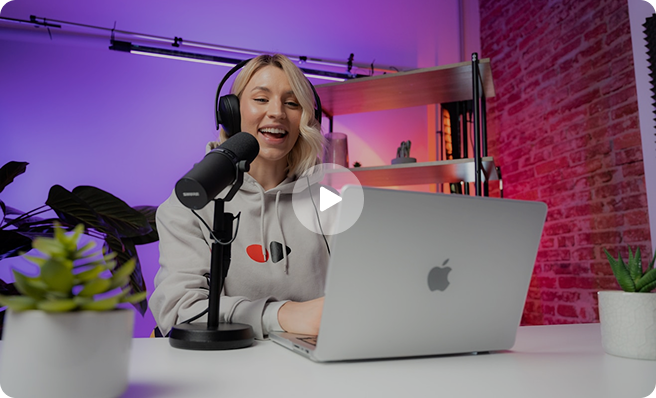Campus Hiring Checklist: Your Complete Guide to Successful Graduate Recruitment
Campus hiring remains one of the most effective ways for Indian enterprises to build a strong talent pipeline. With over 43 million students enrolled in higher education across India, the opportunity is massive — but so is the competition.
Getting campus recruitment right requires careful planning, strategic execution, and attention to detail. This comprehensive campus hiring checklist will help your TA team navigate the entire process, from pre-planning to final onboarding.
Pre-planning checklist (3-6 months before)
Everything that happens later depends on how well you plan now. Most successful campus hiring programs start their planning at least 3-6 months in advance, especially for premium colleges where competition is fierce.
Strategic planning
- Define hiring numbers and role types needed
- Set campus hiring budget and approval limits
- Identify skills gaps and future workforce needs
- Align hiring goals with business growth plans
- Get leadership buy-in on campus strategy
College research and selection
Your scoring matrix should include practical factors. Location matters for regional hiring. Curriculum relevance saves training time. Alumni networks can become your internal champions. Transportation connectivity affects your team's travel comfort and costs.
- Research target colleges and their placement records
- Create a college scoring matrix (location, curriculum, alumni network)
- Shortlist 8-12 colleges based on your requirements
- Contact placement cells and schedule initial meetings
- Understand each college's placement process and timeline
Process design
Assessment frameworks need to be role-specific but fair across colleges. A software engineer role might need coding tests, while a business role might need case studies. However, the difficulty level should be appropriate for fresh graduates, not seasoned professionals.
- Design interview process (rounds, duration, criteria)
- Create assessment frameworks for different roles
- Prepare technical tests and case studies
- Set up an online assessment platform
- Define evaluation criteria and scorecards
Team preparation
Many excellent professionals struggle to interview fresh graduates because they apply experienced hire criteria. Train your team to recognize potential and ask the right questions.
Role assignments prevent chaos on campus. Someone needs to coordinate with placement cells, others handle logistics, and specific people should conduct interviews for specific roles. Clear responsibilities prevent last-minute confusion.
- Identify and train interview panel members
- Assign roles (coordinators, interviewers, logistics)
- Prepare backup interviewers for each role
- Create interview guides and question banks
- Conduct mock interviews with your team
Partnership building checklist (2-4 months before)
Relationship building
Guest lectures are your foot in the door. But don't just talk about your company for an hour. Students will zone out. Instead, share real industry insights. Talk about emerging technologies, market trends, or career paths they've never considered. Make it genuinely useful, and they'll remember you.
Faculty relationships unlock opportunities most companies miss. Professors know their best students personally and can provide insights about potential beyond what interviews reveal. Research collaborations and industry projects create deeper connections that extend beyond single hiring cycles.
- Schedule guest lectures at target colleges
- Offer internship programs and live projects
- Participate in college job fairs and events
- Connect with faculty for potential collaborations
- Engage with student committees and clubs
Communication setup
- Establish regular communication with placement officers
- Share company updates and success stories
- Provide detailed JD and hiring criteria
- Confirm placement calendar dates
- Set up WhatsApp/email groups for quick coordination
Content and material preparation checklist (1-2 months before)
Presentation materials
Students sit through 15-20 company presentations during the placement season. Most are mind-numbing corporate slideshows that put half the audience to sleep. Your presentation needs to be different.
The pre-placement talk is your one shot to get students excited about your company. Make it count. Instead of showing revenue charts and office photos, tell them about the cool problems they'll solve. Show them what their typical day will look like, not what your CEO did last quarter.
- Create an engaging pre-placement presentation
- Include company vision, growth story, and culture
- Add success stories of previous campus hires
- Prepare demo videos and employee testimonials
- Design interactive elements and Q&A sections
Assessment materials
Different colleges need different difficulty levels. What works for IIT Bombay might be too tough for a tier-2 college, and what's appropriate for a regional college might bore IIT students. Prepare variations, not one-size-fits-all tests.
- Finalize technical assessment questions
- Create different difficulty levels for various colleges
- Prepare case studies relevant to your industry
- Set up an online test platform and backup systems
- Test all technical equipment and software
Documentation
Digital processes are non-negotiable now. Students expect to receive and sign offers electronically. Physical paperwork feels outdated and slows everything down. Set up proper digital signature systems that work smoothly.
Welcome kits might seem like small gestures, but they create big impressions. A thoughtfully designed package with company merchandise makes students feel special. When they post photos on social media, it becomes free marketing for future campus visits.
- Prepare offer letter templates
- Create standard terms and conditions
- Get legal approval for all documents
- Set up digital signature process
- Prepare welcome kits and company merchandise
Pre-visit checklist (1 week before)
The week before your campus visit is when small oversights turn into big problems. Most recruitment disasters happen because teams assume everything will work perfectly on the day. Smart TA teams use this week to triple-check everything and prepare for things to go wrong. Confirm every single detail with the college.
Logistics confirmation
- Confirm venue, seating, and equipment requirements
- Check projector, microphone, and internet connectivity
- Arrange refreshments and lunch for interview day
- Confirm transportation and accommodation for the team
- Share contact details with the placement cell
Final preparations
- Brief your interview team on roles and responsibilities
- Pack all required documents and materials
- Prepare backup plans for technical issues
- Create candidate communication templates
- Set up the result compilation process
On-campus execution checklist (Day of visit)
The atmosphere on campus during placement season is intense. Students are stressed, placement officers are juggling multiple companies, and there's always some last-minute drama. Your team's ability to stay calm and adaptable sets the tone for everything else.
First impressions happen within minutes of your arrival. Students notice if you're organized, if your team seems confident, and whether you treat college staff respectfully. These small details influence their perception of your company culture more than any slide presentation.
Setup and preparation
- Arrive 30 minutes early for setup
- Test all equipment and backup systems
- Set up interview rooms and waiting areas
- Arrange welcome desk and registration process
- Brief college coordinators on the day's schedule
Pre-placement presentation
- Deliver engaging company presentation
- Conduct an interactive Q&A session
- Distribute company brochures and materials
- Collect contact details of interested candidates
- Announce the selection process and timeline
Interview process
- Conduct interviews as per the planned schedule
- Maintain consistent evaluation criteria
- Document feedback immediately after each interview
- Keep candidates informed about waiting times
- Provide refreshments and maintain a positive atmosphere
Day-end activities
The end-of-day wrap-up determines whether you leave with solid hires or regrets. Quick, decisive feedback compilation while details are fresh leads to confident offers. Delayed decisions or wishy-washy discussions usually mean missed opportunities and frustrated candidates.
- Compile all interview feedback and scores
- Conduct team discussion on final selections
- Prepare preliminary results and offer list
- Thank placement cell and college coordinators
- Collect feedback about the process from the college
Post-visit checklist (Within 24-48 hours)
Speed wins in campus hiring. While you're taking three days to "discuss internally," other companies are already rolling out offers. Students don't wait around - they accept the first good offer that comes their way. The companies that consistently get the best talent are the ones that make decisions quickly and communicate immediately.
Results and offers
- Finalize selection results within the promised timeline
- Prepare offer letters with accurate details
- Send offers via email and official channels
- Communicate with the placement cell about selected candidates
- Send regret letters to non-selected candidates
Follow-up communication
The feedback loop with colleges matters for long-term partnerships. Placement officers deal with dozens of companies and see what works versus what creates problems. Their insights about your process, team behavior, and student responses are gold for improving future visits. Companies that ask for and act on this feedback get better placement slots next year.
- Share a thank-you note with the college placement team
- Provide feedback about the overall process
- Discuss potential improvements for next year
- Add college contacts to your database
- Schedule a follow-up meeting for next year's planning
Offer management checklist (2-4 weeks after)
Students are genuinely confused during this period. They're comparing offers from companies across different industries, trying to figure out what "variable pay" actually means, and getting advice from parents, seniors, and friends who all have different opinions. Your role becomes part recruiter, part career counselor.
Offer acceptance
- Track offer acceptance status daily
- Follow up with candidates who haven't responded
- Handle salary negotiations professionally
- Prepare for potential counter-offers
- Maintain backup candidate list
Pre-joining engagement
Pre-joining engagement becomes crucial because students have 2-4 months between offer acceptance and actually starting work. That's a long time for doubts to creep in, especially when their friends start joining other companies and sharing experiences. The candidates who feel connected to your company during this period are the ones who actually show up on joining day.
- Send welcome kits to selected candidates
- Create a pre-joining communication plan
- Assign mentors or buddies to new hires
- Share pre-joining reading materials
- Conduct regular check-ins until the joining date
Documentation and analysis
- Compile hiring metrics and success rates
- Analyze cost-per-hire and time-to-hire data
- Document lessons learned and best practices
- Prepare a report for the leadership team
- Update process documentation for next year
Onboarding preparation checklist (1 month before joining)
Program design
Fresh graduates need a completely different onboarding approach than experienced hires. They're transitioning from college life to corporate reality, often moving to new cities, living independently for the first time, and managing their own finances. Your onboarding program needs to account for this massive life change, not just the job transition.
- Create a comprehensive onboarding schedule
- Plan technical and soft skills training
- Arrange workspace and equipment setup
- Prepare orientation materials and handbooks
- Set up IT accounts and system access
Team preparation
- Brief managers about new joiners
- Assign project work and learning goals
- Plan team introduction sessions
- Set up feedback and evaluation process
- Create a 90-day development plan for each hire
Create a shared Excel or Google Sheet with these checklists. Assign owners for each task and track completion status. This ensures nothing falls through the cracks and helps you improve your process year after year.
Make campus hiring easier with RippleHire
Managing all these checklists manually can be overwhelming. That's where RippleHire's AI-powered ATS comes in.
RippleHire streamlines your entire campus hiring process - from candidate screening to offer management. Our platform automates candidate evaluation, tracks interview feedback in real time, and helps you make faster decisions. Companies like Axis Bank and LTIMindtree use RippleHire to deliver exceptional candidate experiences, scoring 4.8/5 in candidate satisfaction.
With seamless integrations to your existing HRIS and communication tools, RippleHire eliminates the manual work that slows down campus recruitment. Your team can focus on building relationships and selecting the right talent, while the platform handles the administrative heavy lifting.
Ready to transform your campus hiring process? Request a demo and see how RippleHire can help you.
Frequently Asked Questions
-
When should we start planning our campus hiring drive?
Start planning 3-6 months before your campus visits, especially for premium colleges where competition is fierce. This timeline allows for proper college research, team preparation, assessment design, and building relationships with placement officers.
Early planning helps you secure better placement slots and gives time to create role-specific assessment frameworks rather than rushing through generic processes.
-
How do we select the right colleges for campus recruitment?
Create a college scoring matrix that includes location, curriculum relevance, alumni network strength, and placement records. Shortlist 8-12 colleges based on your specific requirements and hiring goals.
Consider practical factors like transportation connectivity and regional hiring needs. Research each college's placement process and timeline to ensure alignment with your recruitment schedule and expectations.
-
What's the most important part of the pre-placement presentation?
Make your presentation genuinely useful by sharing real industry insights, emerging technologies, and career paths students haven't considered. Students sit through 15-20 company presentations during placement season, so avoid boring corporate slideshows.
Focus on the cool problems they'll solve and what their typical day will look like, not revenue charts or executive achievements. Include interactive elements and employee testimonials.
-
How quickly should we communicate results after campus interviews?
Send results within 24-48 hours maximum. Speed wins in campus hiring because students accept the first good offer they receive while other companies are still "discussing internally."
Quick decision-making and immediate communication help you secure top talent. The companies that consistently get the best candidates are those that make decisions quickly and communicate results immediately.
-
What should we include in our pre-joining engagement strategy?
Send welcome kits, create regular communication plans, assign mentors or buddies, and conduct periodic check-ins until joining date. Students have 2-4 months between offer acceptance and starting work, giving time for doubts to develop.
Share pre-joining reading materials and maintain connection through this period. Candidates who feel connected to your company during this gap are more likely to show up on joining day.
-
How do we handle offer negotiations with campus candidates?
Handle negotiations professionally while maintaining backup candidate lists. Students are often confused during this period, comparing offers across industries and getting advice from multiple sources.
Your role becomes part recruiter, part career counselor. Track offer acceptance status daily and follow up with candidates who haven't responded within reasonable timeframes.
-
What makes campus hiring different from regular recruitment?
Fresh graduates need different evaluation criteria than experienced hires. They're transitioning from college to corporate life, often moving cities and living independently for the first time.
Focus on potential rather than experience, use role-specific but graduate-appropriate assessments, and provide comprehensive onboarding that accounts for this massive life change beyond just job transition.
-
How can technology help streamline campus hiring processes?
Platforms like RippleHire automate candidate evaluation, track interview feedback in real-time, and help make faster decisions. This eliminates manual administrative work that slows down campus recruitment.
AI-powered ATS systems can handle screening, offer management, and candidate communication while your team focuses on relationship building and talent selection. Companies using these tools achieve higher candidate satisfaction scores.
















